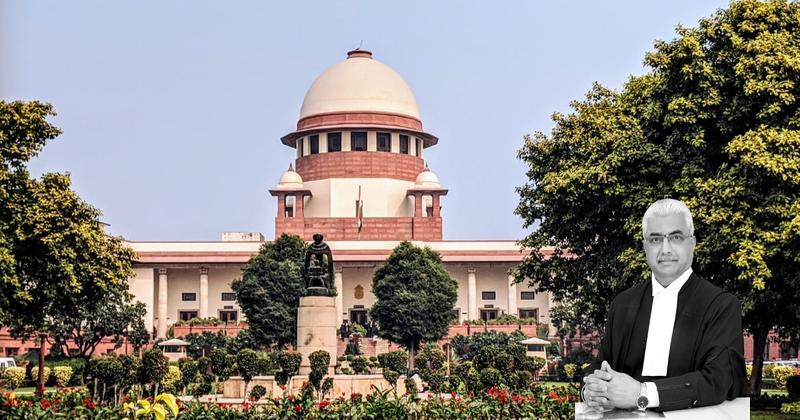1929 of 2015 and other allied writ petitions, preferred by the respondents, by which the High Court has allowed the said writ petitions and has quashed and set aside the order dated 30.03.2015 passed by the Commercial Taxes Tribunal, Ranchi and has also interfered with the concurrent findings of fact recorded by the three authorities and has also quashed the demand notice, holding that the respondents are entitled to benefit of concessional rate of duty at 2% as the use of oxygen can be said to be a “raw material” for the purpose of end product of steel, the State of Jharkhand and other authorities have preferred the present appeals. A certificate (Form VI-B) under Section 8 of the Bihar Finance Act, 1981 was issued in the name of respondent No.2 herein – M/s Tata Iron and Steel Company (for short, ‘Tata Steel’).
Also Read: https://newslaw.in/supreme-court/quashing-of-high-court-judgment-on-land-acquisition-proceedings/
3 In a writ petition preferred by respondent No.1, the High Court of Jharkhand dismissed Writ Petition
No 4963/2005 by holding that respondent No.1 has no locus to file the writ petition as the tax was payable by respondent No.2 – Tata Steel, who is the purchaser of oxygen produced by respondent No.1. A detailed inspection report pertaining to inspection and inquiry of Tata Steel, by a six member committee, was submitted and it was found that ‘oxygen gas’ is not a direct “raw material” of steel production and the work of oxygen is only of a refining agent.
The assessing officer passed an order of assessment dated 1.10.2011 relating to financial years 2001-02, 2002-03, 2003-04, 2004-05 and 2005-06 holding that the oxygen is used as goods other than “raw material” in steel making and that it is a ‘refining agent’, ‘reducing agent’ and that 3% tax is to be levied on oxygen. By the impugned common judgment and order, the High Court has allowed the said writ petition and set aside the orders passed by all the authorities below, holding that as the function of the oxygen is to convert pig iron into steel by reducing the percentage of carbon dioxide by converting it to carbon monoxide which is necessary for the purpose of manufacture of the end product – steel and therefore the oxygen can be said to be a “raw material” and therefore respondent No.1 is entitled to concessional rate of tax at 2%.
1
Also Read: https://newslaw.in/supreme-court/final-decision-and-disclosure-in-collegium-meetings/
It is submitted that the findings recorded by all the authorities below that oxygen can be said to be a ‘refining agent’ and its main role is to reduce carbon content up to the desired level and therefore the oxygen does not fall in the category of other goods used in the manufacturing process of steel and considering the detailed inspection report given by a six member committee, the findings recorded by all the authorities below were not required to be interfered with by the High Court in exercise of powers under Article 226 of the Constitution of India. It is vehemently submitted that the oxygen used can be said to be a part of manufacturing process at the most while in any case it cannot be said to be a “raw material” for the purpose of manufacture of the end product – steel. 5 It is submitted that in fact the 3% tax was paid by the respondents on the pure oxygen till the bifurcation of the State of Bihar into State of Bihar and State of Jharkhand and no dispute at any point of time was raised by the respondents. Ganesh, learned Senior Advocate appearing on behalf of the respondents has submitted that the issue involved in the present appeals is, as to whether the oxygen gas supplied by respondent No.1 (Linde India Limited) to respondent No.2 (Tata Steel) is used as a “raw material” in the manufacturing process of steel, so as to entitle respondent No.1 to pay concessional rate of tax on the same under Section 13(1)(b) of the Bihar Finance Act, 1981 (as applicable to the State of Jharkhand). It is submitted that thereafter the High Court has come to the conclusion that use of the oxygen in steel making is as “raw material” and “raw material” is not anti-thesis to it being a “refining agent.” That the High Court has rightly observed that it is a wrong notion in the mind of the authorities below that a ’refining agent’ cannot be a “raw material.” It is submitted that the High Court has rightly held that ‘refining agent’ can also be a “raw material”, if it is indispensable, non-replaceable, used in large quantity, which is inevitable to be used.
It is submitted that in the case of Ballarpur Industries Limited (supra), the issue was, as to whether input of sodium sulphate used in the manufacture of paper would cease to be a raw material by reason alone of the fact that in the course of chemical reactions the ingredient is consumed and burnt up.
It is submitted that the method by which the steel is made is the Basic Oxygen Steel Method, obviously enough, steel cannot be made without oxygen. It is submitted that therefore the question of use of oxygen in any assembly, whatsoever, nature does not arise. 9 Now so far as the contention of the State regarding declaration in Annexure B by Tata Steel is concerned, it is submitted that the said contention was earlier raised by the State in the first round of litigation between the parties, which culminated in the judgment of this court in the case of BOC India Limited (supra).
The importance of the product lies in the fact not in its absence in the end product but its presence at the delivery end of the process; iv) the quantity of the raw material used is also significant inasmuch as for manufacturing 1000kg of steel, 70kg of oxygen is required. The reduction of percentage of carbon from the pig iron converts pig iron into steel; vii) the function of the raw material itself. The said judgment had already been considered and distinguished by this Court in the case of Ballarpur Industries Limited (supra).
This may be noted that only in a case where oxygen gas is used as “raw material”, the same would be taxed at the rate of 2% of the sales tax, which otherwise is chargeable @ 3% on the sale thereof. That thereafter on remand, an inspection and enquiry was carried out by a six members expert committee who submitted a detailed report wherein it was found that the ‘oxygen gas’ is not a direct ‘raw material” of steel product and the work of the oxygen gas is only of a ‘refining agent.’ As per the report, the function of the oxygen is to reduce the carbon content as per the requirement and the same is not a direct “raw material” of steel. causes a hot air blast of iron ore (oxide of iron) by mixing it with lime stone and coke in its blast furnace.
The pure oxygen used in Refining process is called raw- material by M/s Tata Steel and M/s B.O.C.
Case Title: STATE OF JHARKHAND AND ORS. ETC Vs. LINDE INDIA LTD AND ANR ETC (2022 INSC 1240)
Case Number: C.A. No.-008061-008064 / 2022



